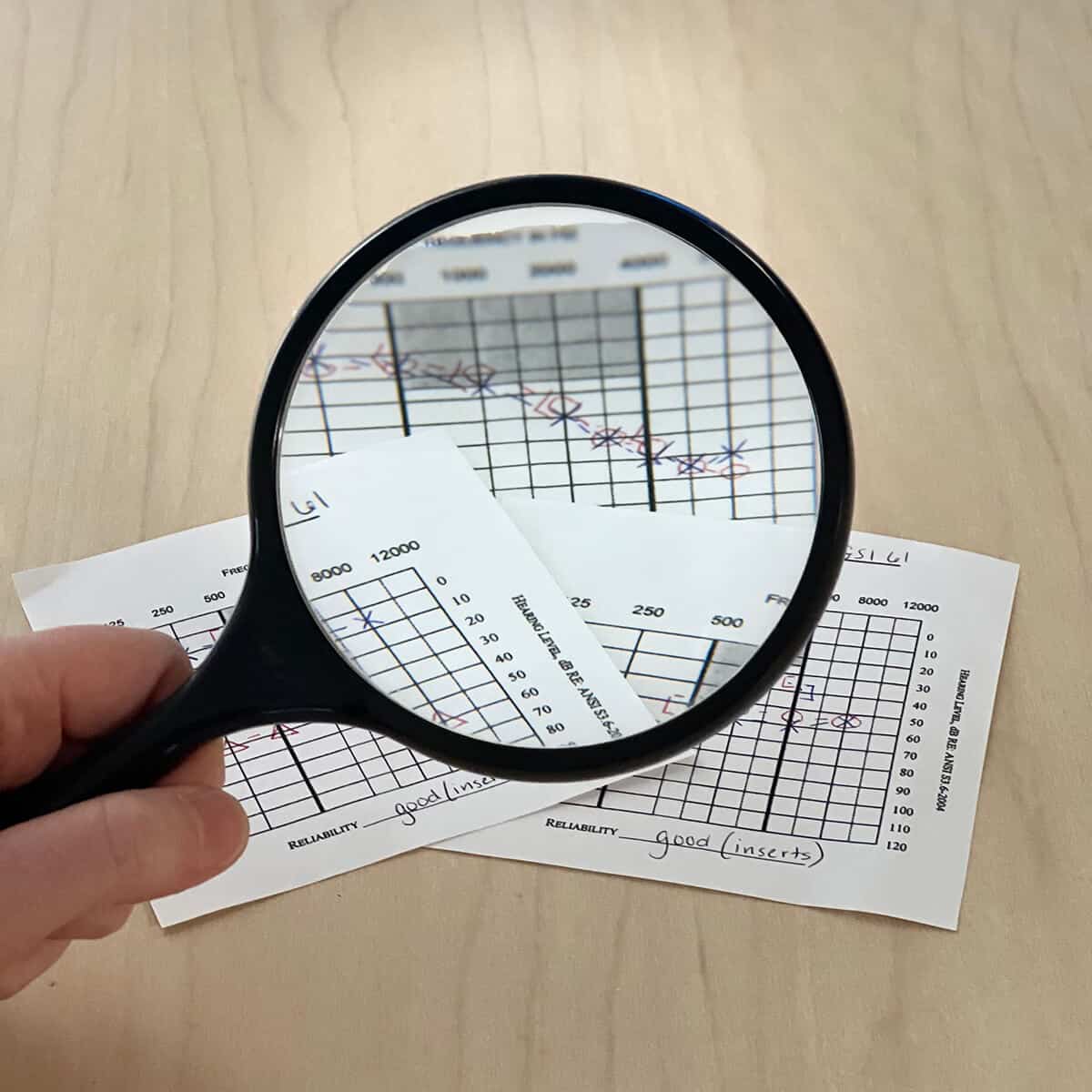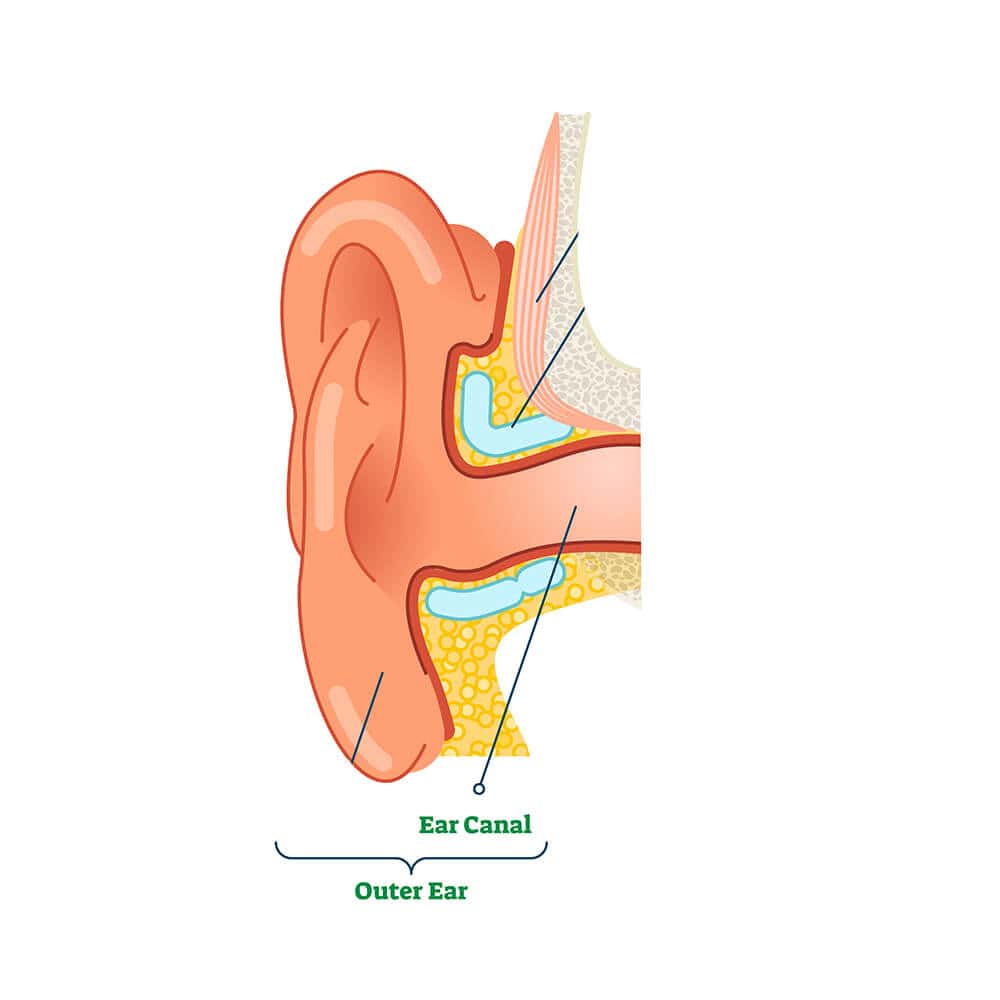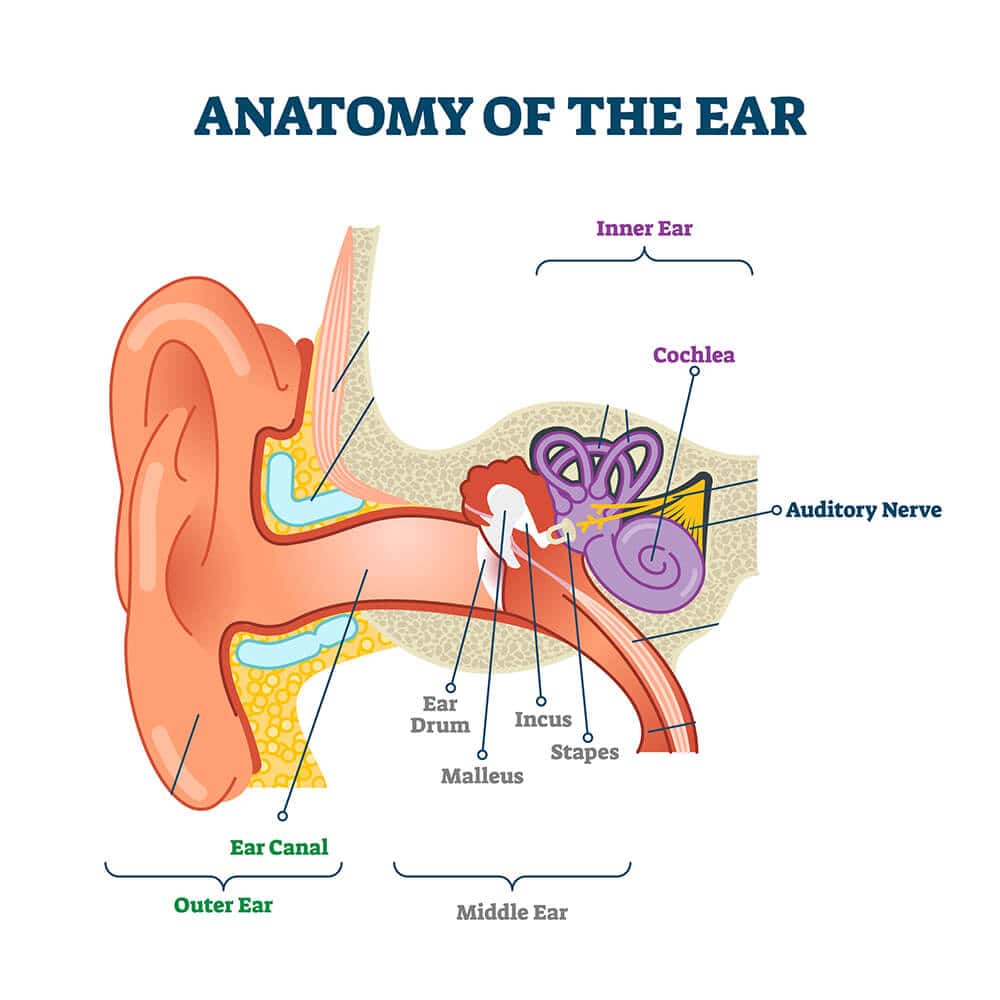Types of Hearing Loss
A series of hearing tests can determine the amount of loss you experience compared to an average of many other adult listeners with typical hearing. Hearing loss can be experienced in varying degrees, such as mild, moderate, moderately-severe, severe or profound. Hearing loss can also vary depending on pitches or frequencies.

Determining a Hearing Loss
The volume of sounds you hear is measured in decibels (dB), 15-20 dB being the softest whisper and 120 dB being a jet engine. The softest sounds one can hear are called thresholds. Normal hearing thresholds for adults are considered 0-25 dB across the range of frequencies tested. Speech testing is also conducted as a part of this series of evaluations and helps to assess the levels of particular words you can hear clearly. These tests can help determine the type of hearing loss you’re experiencing, which can be categorized conductive, sensorineural or mixed.
Request an Appointment
Conductive Hearing Loss
Conductive hearing loss occurs when there is a problem with the way sound is conducted to the inner ear and a structure called the cochlea. The problem may lie in the ear canal, eardrum (tympanic membrane) or the middle ear (ossicles and Eustachian tube). The inner ear and auditory nerve remain unaffected in this type of hearing loss.

Sensorineural Hearing Loss
Sensorineural hearing loss occurs when there is a problem with the sensory receptors of the hearing system, specifically in the cochlea of the inner ear or auditory nerve. The majority of sensorineural hearing loss occurs as a result of an abnormality or damage to the hair cells in the cochlea. This abnormality prevents sound from being transmitted to the brain normally, which results in a hearing loss.

Mixed Hearing Loss
Mixed hearing loss occurs when a person has a sensorineural hearing loss in combination with a conductive hearing loss. This means there is a problem in the inner ear as well as in the outer and/or middle ear.
School and Clinic Locations
Let Us Help
At Buffalo Hearing & Speech Center, we are dedicated to helping you overcome any hearing, speech, communication, or educational need you have. Call us to speak with a Specialist or Write Us A Message.
The solution starts here!




